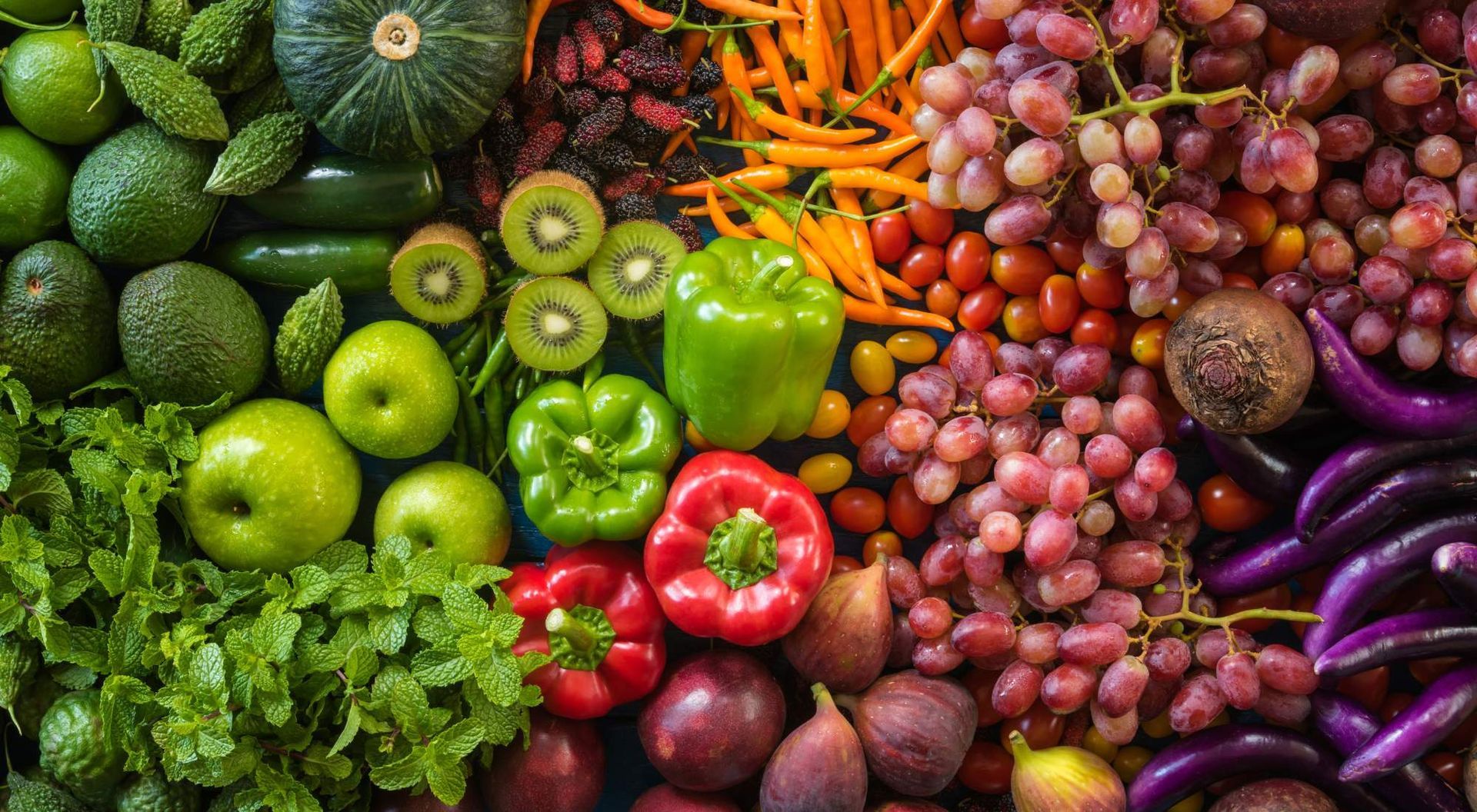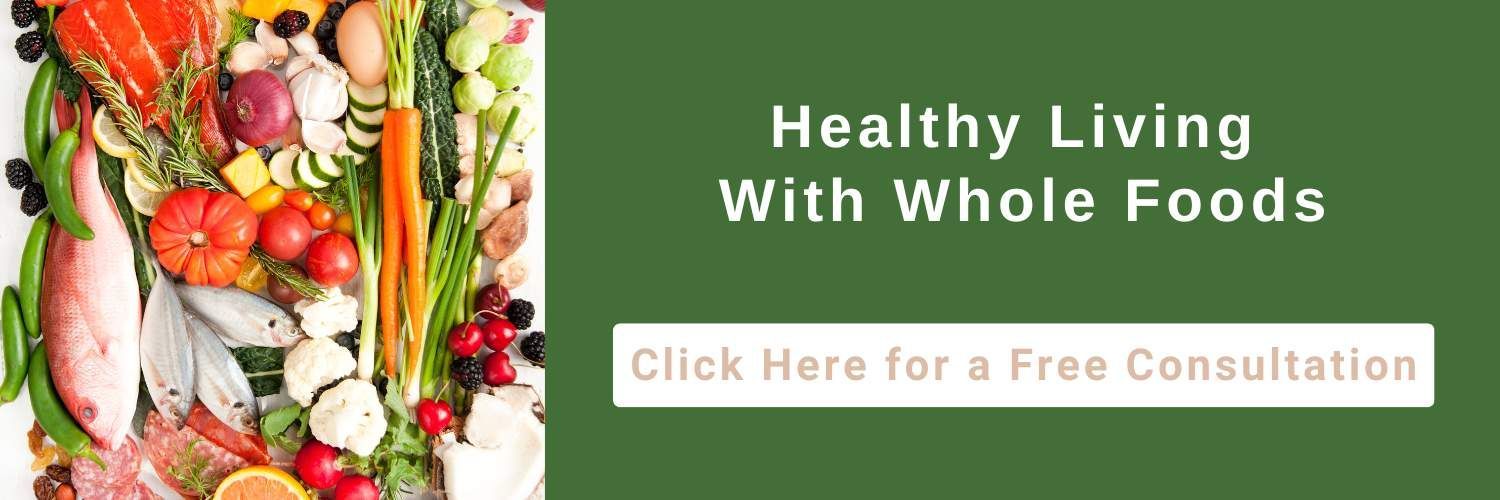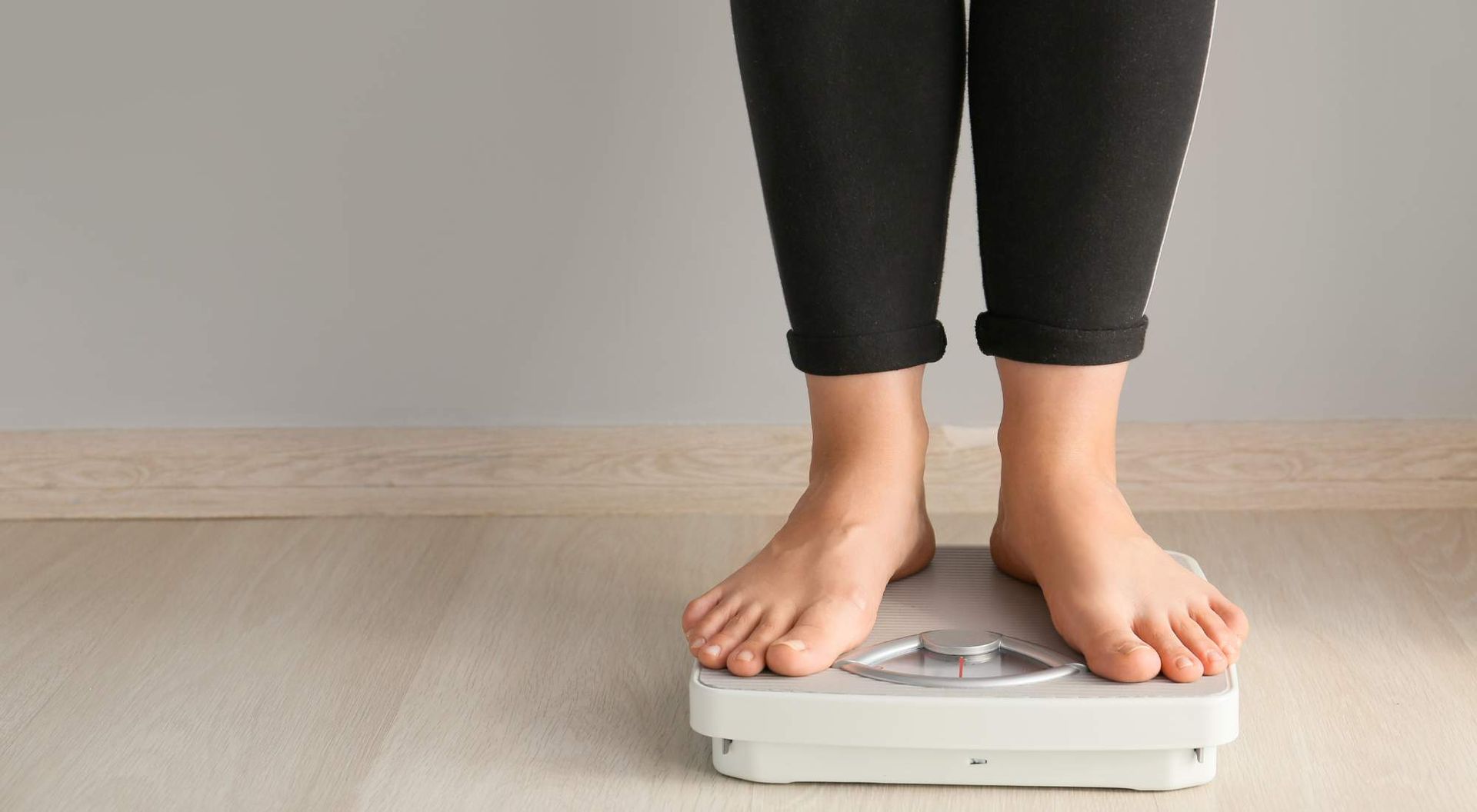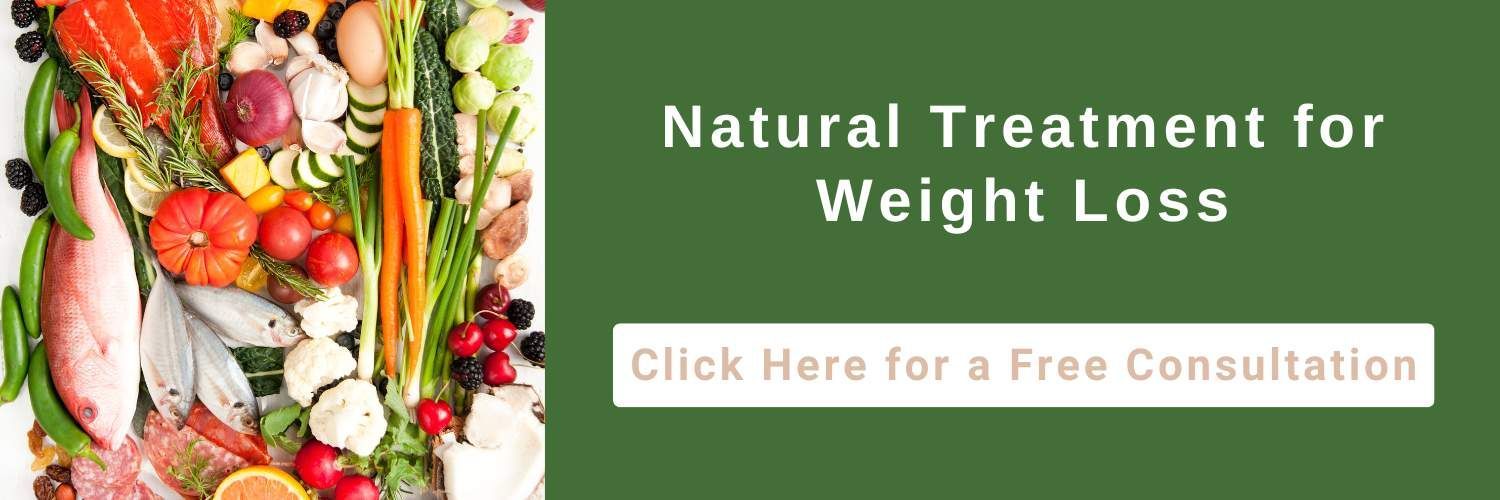Whole Food Diets and Weight Loss: Can a Natural Eating Plan Help You Shed Pounds?
"The content below is not intended to be a substitute for professional medical advice, diagnosis, or treatment. Always seek the advice of your physician or other qualified health provider with any questions you may have regarding a medical condition."
You’re struggling with weight loss.
Even though you’re exercising, following a diet plan, and cutting calories, you still can’t seem to lose much weight.
Each body is unique and responds to methods of weight loss in different ways.
Maybe you’ve cut calories but are still eating many highly processed foods. Or you’re doing great during the day but find yourself on the couch binge-eating at night. You might think you’re doing it all right, but there’s an underlying reason why it’s not working.
Learn how eating a whole foods diet and weight loss are related and how investing in your nutritional health can not only help you lose weight but increase your quality of life.
Table of Contents
- What Is a Whole Foods Diet Plan?
- Scientific Evidence That a Whole Foods Diet Can Help With Weight Loss
- What Can You Eat on a Whole Foods Diet Plan for Weight Loss?
- 5 Tips for Finding Success on a Whole Foods Nutrition Plan
- 4 Other Benefits of a Whole Foods Diet Besides Weight Loss
- HealthierU Takes a Holistic Approach to Weight Loss
What Is a Whole Foods Diet Plan?
A whole foods diet refers to eating foods as close to their natural state as possible, so you reap the most nutritional benefits.
Think about it. If you’re eating a whole potato versus an equal serving of potato chips, you’re getting more vitamins and nutrients from the whole potato. Once foods are processed, they are stripped of their nutritional value and often have refined sugars, salt, and chemicals added to them.
A good way to think about whole foods is this — if it grows in the ground, it’s a whole food.
Here are a few great whole food options you should keep as a part of your diet:
- Fruits and veggies
- Dairy products without added sugar or chemical flavorings
- Meat, poultry, or fish that is baked, boiled, grilled, or roasted
- Legumes and nuts
Can You Eat Any Processed Items on a Whole Foods Diet?
Many, if not most, foods you’re eating are processed in some way through preparation or cooking.
That means anything you buy that is already cooked, canned, frozen, packaged, or nutritionally altered must be considered “processed.”
Because processed foods are convenient, they have a place in many of our diets. But, when adding processed foods to your diet, choosing lightly processed foods is the better option for a healthy diet.
Choose foods like:
- Boiled brown rice
- Yogurt
- Cheese
- Canned or frozen fruits and vegetables
- Roasted nuts
- Bagged salad
What you don’t want to be eating are things like:
- Frozen pizza
- Fast food
- Microwavable dinners
- Most things pre-packaged
To be sure your foods are as lightly processed as possible, read the ingredients. If they contain added sugars or syrups, food coloring, excess sodium, or a long list of ingredients you can’t pronounce, put them down.
Scientific Evidence That a Whole Foods Diet Can Help With Weight Loss
Calories, protein, and water intake are three big components that significantly influence the effectiveness of weight loss — but not all calories are created equal.
One study provides evidence indicating that a whole food, plant-based diet achieves greater weight loss when compared with other dietary interventions that do not restrict calories or mandate exercise. This type of diet is said to be a safe, simple, and sustainable solution to the obesity epidemic.
By eating foods full of ingredients that are healthy for your body, you’re lessening the glycemic impact and delivering prebiotics to the gut microbiome.
Another study supports the idea that a whole foods diet can help with weight loss simply because many processed foods are full of sugar and salt, which means more calories. The study noted that people who ate processed foods ate an additional 500 calories per day as compared to people who ate an unprocessed diet, which correlated to around a two-pound weight gain over two weeks. Once those participants switched to an unprocessed diet, they lost the extra weight.
At HealthierU, Dr. Sergi uses a holistic nutrition approach to help you meet your goals. If weight loss is what you desire, getting to the root of what is blocking you from meeting that goal is what we are after. And eating a whole foods diet could be part of the solution.
Request a nutrition consultation with Dr. Sergi today.
What Can You Eat on a Whole Foods Diet Plan for Weight Loss?
It seems simple, right? When you’re giving your body high-quality foods that it can easily recognize and digest, it will not only feel better but function better, too.
To keep your body in a healthy balance and kick-start weight loss, you want to fuel it with everything it needs, including:
- Minimally processed foods
- Washed salad greens
- Sliced fruits
- Canned or frozen fruits and vegetables with no added sugar or salt
- Cheese and yogurt with no added sugars or syrups
- Dairy products
- Milk
- Feta cheese
- Parmesan
- Greek yogurt
- Cottage cheese
- Refined carbohydrates
- Brown rice
- Quinoa
- Barley
- Amaranth
- Steel-cut or old-fashioned oats
- Farro
- Bulgar
- Fresh fruit
- Healthy fats
- Avocado
- Walnuts
- Almonds
- Chia seeds
- Olive oil
- Avocado oil
- Meat and poultry raised without antibiotics or hormones
- Fresh or frozen fish
- Halibut
- Shrimp
- Cod
- Snapper
- Salmon
- Sea bass
- Dark leafy greens
- Spinach
- Kale
- Swiss chard
- Bok choy
- Vegetables
- Asparagus
- Green beans
- Bell pepper
- Corn
- Carrots
- Potatoes
- Dried legumes
- Lentils
- Black beans
- Chickpeas
- Eggs
What Should You Avoid Eating on a Whole Foods Diet Plan for Weight Loss?
To successfully transition to a whole foods diet plan for weight loss, you should avoid eating things that are pre-packaged and ready-to-eat, are heavily processed, contain added sugars, or are refined carbohydrates.
Avoid things like:
- White bread
- French fries
- Fast food
- Deli meat
- Candy
- Commercial baked goods
- Most microwave meals
- Soda or sweetened beverages
- Hot dogs
- Chicken nuggets
- Boxed macaroni and cheese
- Frozen pizza
- Chips and crackers
- Snack bars
Generally, the middle aisles of a grocery store contain processed items. When shopping, try sticking to the outer aisles to find the best whole food options for weight loss.
5 Tips for Finding Weight Loss Success on a Whole Foods Nutrition Plan
You’ve probably heard this before — eat healthy food and you’ll lose weight, right?
Wrong. If eating a whole foods diet — or even many whole foods — isn’t something you typically do, finding success with weight loss on a whole food nutrition plan might not sound so simple.
These five tips will help you ease into your whole foods diet and find success along the way.
#1: Ease Yourself Into the New Eating Plan
For some, making too many big changes at once can be intimidating.
If your diet currently consists of few to no whole food options, start by simply switching out just one meal a day with whole foods. Once you’ve got that figured out, move on to eating two whole food meals daily. This slow transition can help you gradually ease into your new eating habits until all your regular meals consist of whole food options.
As you continue to add whole foods to your diet, eliminate processed foods at the same time.
You could try swapping:
- Plain yogurt with fruit for flavored yogurt
- Homemade oatmeal for cereal
- Homemade granola for packaged bars
- Quinoa for white rice
#2: Start the Diet With a Partner
Having an accountability partner tends to make these big life changes a bit simpler. When you have someone you can talk to or share recipe and meal ideas with, you might be more successful than trying to face this new lifestyle alone.
Your accountability partner could be a:
- Friend
- Spouse
- Coworker
- Family member
- Online community
#3: Try Meal Planning
Meal planning takes some … well, planning, but can help you be successful when trying to eat a whole foods diet.
By mapping out meals in advance, shopping for the ingredients, and prepping what you can ahead of time, you’re ensuring you have everything successfully planned and prepared for when you’re ready to eat.
#4: Snack on the Right Foods When You’re Hungry
Be mindful of what you reach for when your body tells you that it’s hungry. This is where and why meal planning can be helpful.
Oftentimes, when looking for a quick snack, people tend to grab low-calorie and highly-processed foods, which are usually less satiating. Because these options don’t fill them up, they keep eating more, which ultimately leads to weight gain.
Not only are whole foods more filling than processed foods, but they are also usually higher in protein and fiber. Choose whole food snacking options such as:
- Fruits
- Vegetables with homemade hummus
- Nuts
- Yogurt
And in an attempt to avoid snack hunger, try not to skip meals. We get it — many people associate losing weight with eating less and think skipping meals might be the answer. But, your body needs the nutrition from whole foods to stay healthy and happy.
If you’re properly fueling your body, you find yourself no longer even craving the processed snacks that don’t fill you up when snack time rolls around.
#5: Look Ahead at Restaurant Menus
Eating out is a social part of life, and sometimes it’s just impossible to avoid.
Being on a whole foods diet does not mean you can’t enjoy a good restaurant meal, but it might be a bit more challenging and require some planning.
Stay on track by taking the time to choose a restaurant ahead of time and reviewing the menu to plan exactly what you’ll order. And remember, most restaurants are accommodating when it comes to making menu swaps to meet dietary needs, so don’t be afraid to ask.
4 Benefits of a Whole Foods Diet Besides Weight Loss
Losing weight is a great advantage that can come from choosing to eat a whole foods diet, but it’s not the only benefit. And if you can potentially gain more health benefits from making this type of lifestyle change, then why not do it?
#1: Chronic Disease Prevention
Eating a whole foods diet does not mean that you can’t eat meat — lean proteins are a great option for whole food nutrition.
However, eating a whole foods diet often comes with a natural increase in plant-based foods because you’re taking in many fruits, vegetables, nuts, seeds, and legumes. One study shows that people who ate a plant-based diet had a 19% lower risk of dying from cardiovascular disease.
You’re also eating whole grains, fermented dairy, olive oil, and fish, which are associated with a lower risk of many chronic diseases, like:
- Cancer
- Type 2 diabetes
- Heart disease
- Stroke
#2: Chronic Disease Management
Eating more whole foods and many plant-based foods is a natural way to limit both fat and calorie intake while also increasing intake of important nutrients like:
- Vitamins
- Minerals
- Antioxidants
By keeping fat and calories low and nutrients high, you’re putting your body in a great position to better manage chronic diseases like:
- Type 2 diabetes
- Heart disease
- Stroke
- Chronic kidney disease
#3: A Stronger Immune System
Eating nutrients that are known to boost your body’s defenses can help support a healthy immune system. When eating a whole foods diet and increasing your fruit and vegetable intake while decreasing your processed food intake, you’re getting in a wider range of nutrients, including:
- Vitamin C
- Zinc
- Selenium
Ultra-processed foods are known for
negatively affecting gut health and can affect the activity of your T-cells, which are crucial for proper immune function.
#4: Better GI Health
Did you know that the recommended daily fiber intake for women is 25 grams per day and for men, 38 grams per day?
A diet high in fiber not only reduces the risk of many chronic conditions, but it’s also important for the health of the digestive system.
Eating whole foods is a great way to increase your fiber intake, resulting in better GI health along the way.
What can you eat to increase your fiber intake? Try:
- Whole grains
- Legumes and beans
- Fruits like apples, oranges, pears, blueberries, strawberries, and raspberries
- Vegetables like peas, cauliflower, sweet potato, squash, and carrots
HealthierU Takes a Holistic Approach to Weight Loss
Are you curious if a whole foods diet and weight loss go hand-in-hand? Can eating whole foods really help you lose weight?
When you’re struggling with weight loss, your diet can play a part in why you’re having difficulty meeting your goals. But there could also be more to it.
Dr. Sergi at HealthierU takes a holistic and personalized approach to weight loss by taking the time to get to know every person she works with.
Dr. Sergi learns about you, your body, and what types of foods you positively and negatively react to. From there, she helps create a comprehensive diet that works to meet your goals.
Whether it’s making a complete switch to a whole foods diet approach or simply tweaking some things here and there, Dr. Sergi can help you better understand your body, what you’re feeding it, and how it works.
Contact
HealthierU to schedule a nutrition consultation today.







